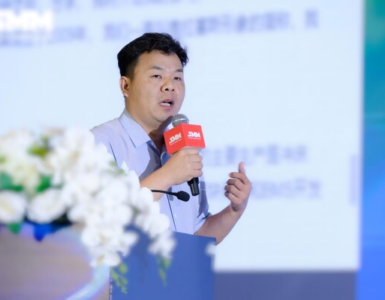SK On develops polymer electrolytes for lithium metal batteries.
SK On has succeeded in co-developing a polymer electrolyte for lithium metal batteries that can operate at room temperature. This achievement was made through the company’s collaboration with a research team led by the late Professor John B. Goodenough from the University of Texas. It is expected to contribute significantly to improving solid-state battery performance and accelerate the development of all-solid-state batteries.
On June 16 (KST), SK On announced that it has successfully developed a novel polymer electrolyte, the “SIPE (single-ion conducting polymer electrolyte),” together with with Professor Hadi Khani, a Research Assistant Professor who worked in John B. Goodenough group.
Professor Goodenough is a pioneer in battery technology who doubled the capacity of lithium-ion batteries. In 2019, he was awarded the Nobel Prize in Chemistry at the age of 97, setting the record as the oldest Nobel laureate. Since 2020, he had been working with SK On on the joint development of “solid electrolytes” for lithium metal batteries until his passing in June last year, after which Professor Khani took over the research team.
The research has been published in the prestigious Journal of Electrochemical Society.
Polymer electrolytes are considered as the next-generation solid battery materials with low cost and easy manufacturing. However, they have lower ionic conductivity compared to oxide and sulfide-based electrolytes, which means they typically operate only at high temperatures of 70-80°C. Overcoming this limitation is one of the key challenges in the field.
SIPE solved this issue by improving ionic conductivity* and lithium-ion transference number**. Compared to existing polymer electrolytes, SIPE has increased room temperature ionic conductivity by approximately ten times (1.1×10-4S/cm) and the lithium-ion transference number from 0.2 to 0.92, nearly a fivefold increase. These improvements enable operation at room temperature.
(*)Ionic conductivity: a measure of a material’s tendency to conduct ions; higher values indicate easier ion movement within the electrolyte
(**)Transference number: the proportion of current carried by a particular ion; a higher lithium-ion transference number means more lithium cations are moving
Higher ionic conductivity and lithium-ion transference number enhance battery output and charging performance.
Experimental results showed that batteries applied with SIPE maintain 77% of their discharge capacity during high-rate charging and discharging (2C***) compared to low-rate charging and discharging (0.1C). Solid electrolytes generally suffer from significant capacity loss during high-rate charging due to low ionic conductivity, but SIPE minimizes this issue.
(***)C-rate (charging and discharging rate): a unit that indicates the speed of charging and discharging; a 1C rate during charging means the battery charges to 100% capacity in one hour
It is noteworthy that the stability of the solid electrolyte interphase (SEI) has been improved to suppress dendrite**** formation. Lithium metal batteries can significantly increase energy density by using metal lithium instead of graphite as the cathode. However, resolving the persistent dendrite issue is essential for commercialization.
(****)Dendrite: tree-like crystalline structures that accumulate on the cathode surface during the charging and discharging process when lithium ions move between the anode and cathode; these structures are one of the causes of reduced battery lifespan and safety
Additionally, SIPE has high mechanical durability, making mass production possible. It also has excellent thermal stability, withstanding temperatures above 250°C. When applied to next-generation hybrid solid batteries, it is expected to improve charging speed and low-temperature performance.
Kim Tae-kyung, Head of SK On’s Next Generation Battery R&D Office. He added:
Based on the results of this research, we expect to accelerate the development of solid-state batteries applying polymer electrolytes.
“SK On will seize growth opportunities in the next-generation battery field by leveraging our competitive edge in new material technologies.”
Meanwhile, SK On is developing two types of all-solid-state batteries: polymer-oxide composites and sulfide-based batteries. The goal is to produce pilot prototypes in 2025 and 2026, respectively, and commercial prototypes in 2028 and 2029. The sulfide-based next-generation battery pilot plant, currently under construction at the company’s Battery Research Institute in Daejeon, South Korea, is expected to be completed in the second half of next year.
READ the latest Batteries News shaping the battery market
SK On develops polymer electrolytes for lithium metal batteries. source









